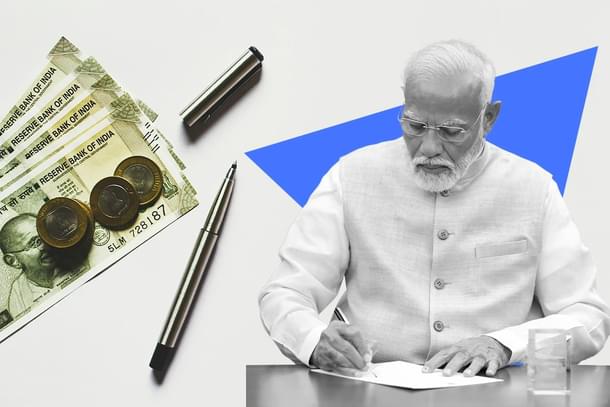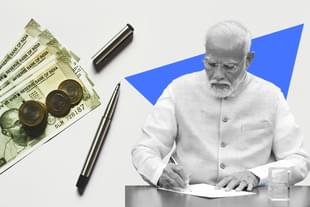News Brief
Modi 3.0 Eyes 'Voluntary And Contributory' Universal Pension Scheme To Strengthen Social Security For India’s Aging Population
Nishtha Anushree
Feb 25, 2025, 12:39 PM | Updated 12:39 PM IST
Save & read from anywhere!
Bookmark stories for easy access on any device or the Swarajya app.


India is exploring the introduction of a Universal Pension Scheme, which would be 'voluntary and contributory', ensuring social security for all individuals, according to officials quoted by the Economic Times.
The Ministry of Labour and Employment has initiated discussions on the framework of this proposed pension scheme. "The scheme will not be tied to employment and hence will be open for everyone to contribute and earn a pension," a senior government official was quoted as saying by ET.
The Employees' Provident Fund Organisation (EPFO) is working on the initial design, and once finalised, the ministry will engage with stakeholders to refine the proposal.
To enhance its appeal and streamline implementation, the scheme may integrate certain existing pension initiatives. It is expected to extend benefits to unorganised workers, self-employed individuals, and traders, allowing anyone aged 18 and above to contribute and receive a pension post-60.
Among the schemes that could be incorporated are the Pradhan Mantri Shram Yogi Maandhan (PM-SYM) and the National Pension Scheme for Traders and Self-Employed (NPS-Traders).
Both are voluntary programs offering a monthly pension of Rs 3,000 upon retirement, with contributions ranging from Rs 55 to Rs 200, depending on the enrolment age, matched by government contributions.
Additionally, the Atal Pension Yojana, currently managed by the Pension Fund Regulatory and Development Authority (PFRDA), may also be included under this broader scheme.
To ensure sustainable funding, cess collected under the Building and Other Construction Workers (BoCW) Act could be pooled into the pension corpus for construction workers.
The Centre may also encourage state governments to integrate their pension schemes under this initiative, ensuring balanced funding, increasing pension payouts, and preventing beneficiary overlap.
India's senior population (aged 60 and above) is projected to reach 227 million by 2036, accounting for 15 per cent of the total population, and is expected to rise to 347 million (20 per cent) by 2050.
Globally, countries like the US, Canada, Europe, Russia, and China provide comprehensive social security systems, covering pensions, health benefits, and unemployment insurance.
In contrast, India primarily relies on the provident fund system, government-backed old-age pensions, and targeted health insurance for lower-income groups. The proposed Universal Pension Scheme aims to bridge this gap and offer broader financial security to all citizens.
Nishtha Anushree is Senior Sub-editor at Swarajya. She tweets at @nishthaanushree.





